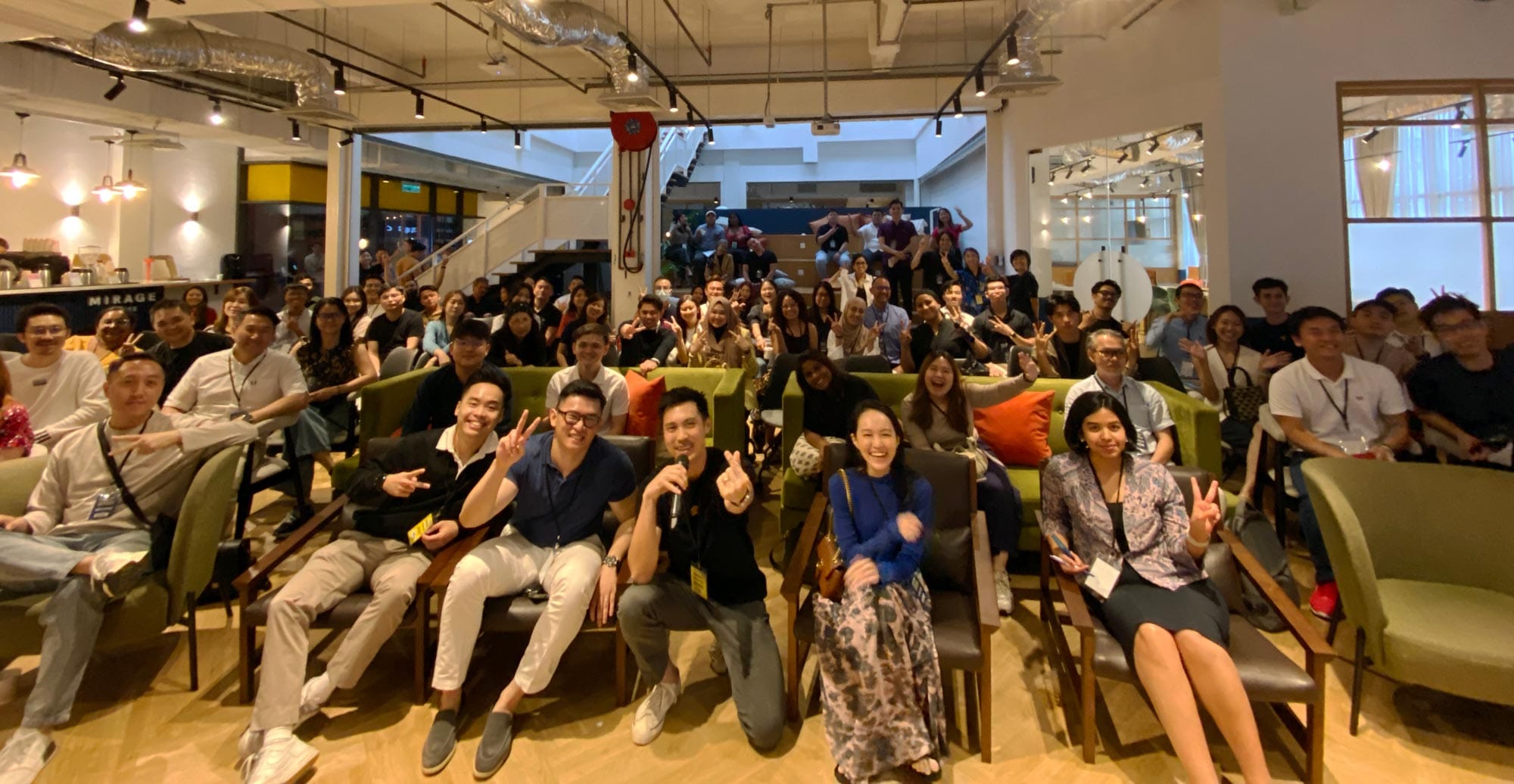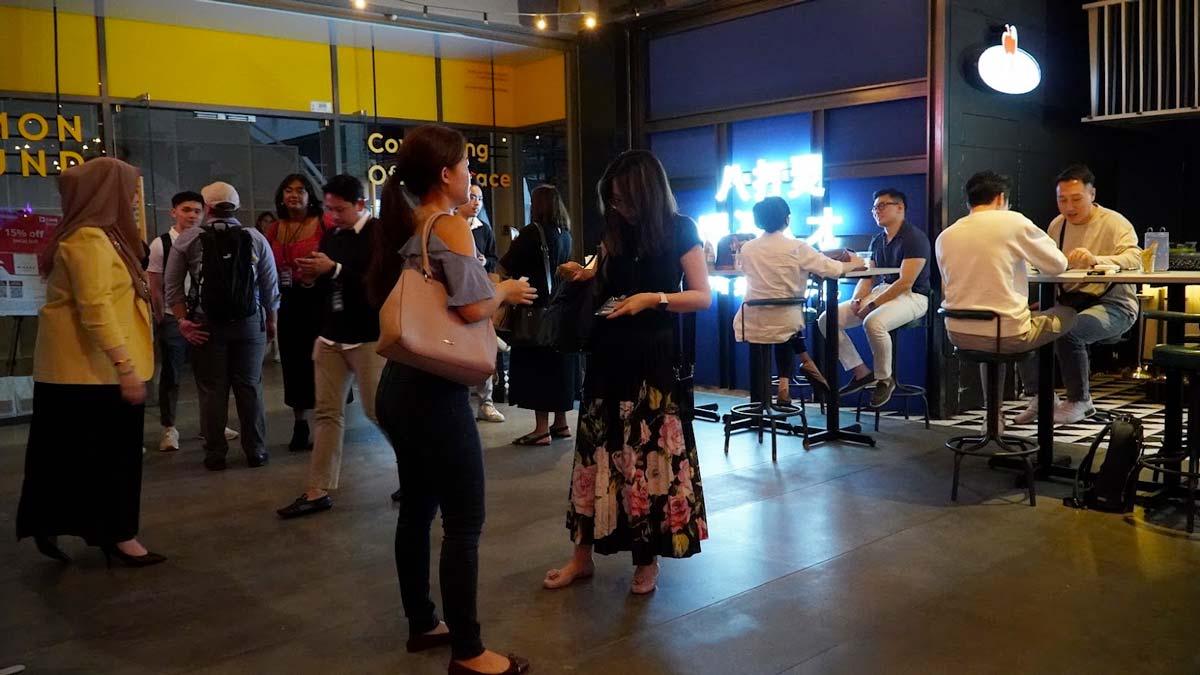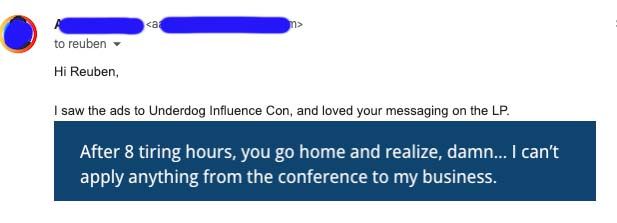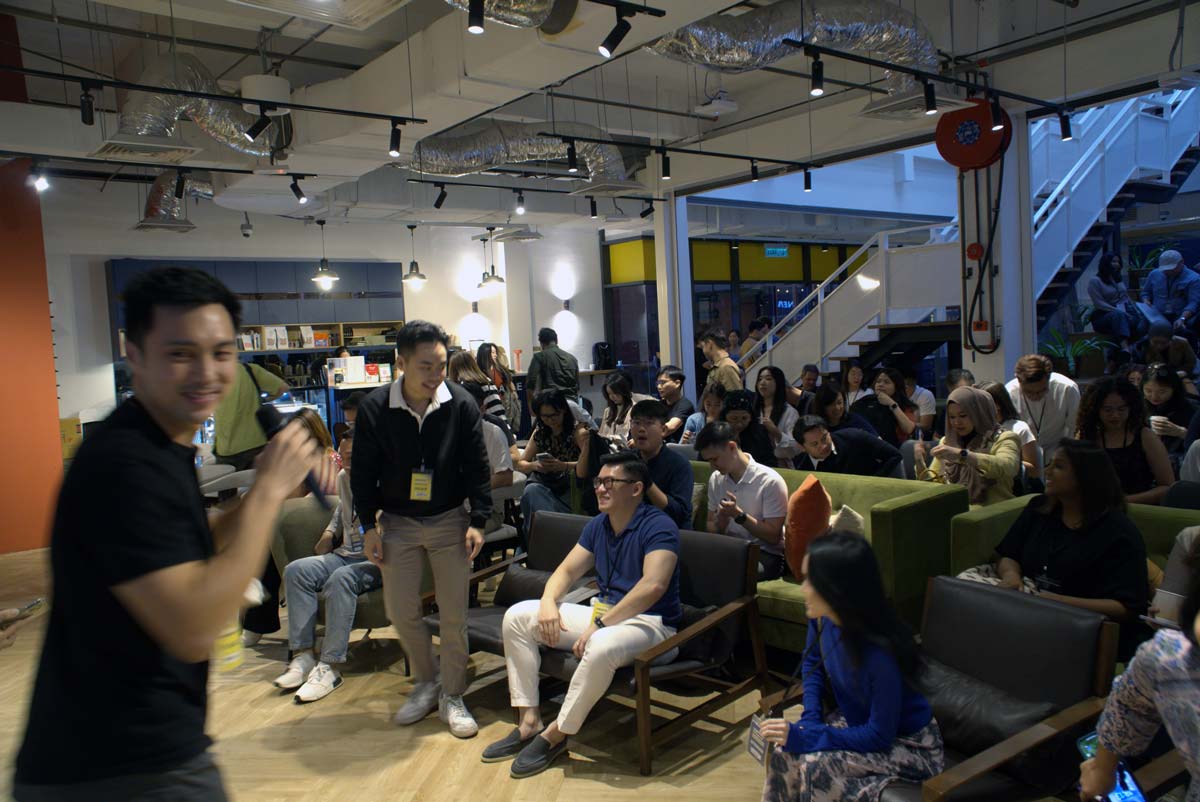12 Lessons Learnt Selling Out 3 Marketing Conferences
With Underdog Influence Con just ended a week ago.

No matter the type of events you organize, you have to remember that you're doing it for the participants. It's not for you.
What would motivate people to attend the event? Why should they spend time and money for it? What would make them excited enough to arrive early and stay till the end?
Underdog Influence Con was exactly a week ago, and I thought I'll share the 12 lessons I've learnt organizing the event, including some improvements to make for the next conference.
Table of contents
- People will be people
- Always manage the energy
- Write the way you talk.
- You have to do many things.
- Invest in automation.
- Consistency is key – to everything.
- People who pay, pay attention.
- Wait for the climax. (People are last minute)
- Build a portfolio of wins.
- Do the opposite.
- Market with people, not at them.
- People look at others for clues.
1. People will be people.
I’ve mentioned this before and it's still true
People will not take action unless they have a reason to. You need to give them a reason.
You may not like it. I don’t. But that’s just how people are. It's the reason why E-commerce stores have 8.8, 9.9, 10.10, and whatever sales. It works.
We started selling tickets with a pre-sale price before increasing the price a little every few days. The simple strategy created urgency and ultimately worked.

2. Always manage the energy.
As humans, we can only have 4-6 hours of productive time a day. That is our energy is finite.

During Underdog Influence Con, we decided to host an after-party networking session after the main conference. We did this because people from the last conference told us they wished there were more networking opportunities.
But it backfired.
People were tired after sitting through a whole day of talks, and didn't spend much time networking.
What would have been better is to extend the break and networking time in the middle of the conference when everyone's energy was still at 100% and most of the speakers were still around.
3. Write the way you talk.
What really turns me off is seeing ads promoting an AI conference or workshop, saying things like it's the end of the world – and then they use ChatGPT to write their ad copy.
You'll know it's generated text. Because THEY DON'T SOUND LIKE THAT.
Here's an example:

Who says things like "intricate tools" or "sheer range of activities" in real life?
I know they don't talk like that. In fact, most of us do not.
Yet, when it comes to writing a post or ad – people suddenly put on a marketing hat. They stiffen up and write like a robot.
Write the way you speak. The goal of your copy is to connect with your audience and not to sound smart.
Here's the headline for Underdog Influence Con:

And the body:

You'll know when your copy begins to relate and connect with people. Here are some messages I received after launching the page:


4. You have to do many things.
As a marketer, you have to hustle.
The marketer who only drives traffic through Facebook Ads will lose to other marketers who are driving traffic from 5 different sources.
You can be good at many things.
- The creator of Ruby on Rails
- Le Mans 24hour class-winner
- CTO of Basecamp
- NYT best-selling author
I don't like the idea that you can only be good at one thing. It's reasonable to be good at many things.
As a marketer, you have to be that. You can't just be good at Google Ads but know nothing about analytics or social media.
We marketed Underdog Influence Con on as many traffic channels as we can.
Here is a rough breakdown by % of the channels that contributed to ticket sales:
- 25% from paid advertising. (Facebook Ads)
- 5% from media partners. (Coffee Break, etc.)
- 30% from emails. (Daily CMO's newsletter)
- 30% from social media. (Instagram, Linkedin, Facebook)
- 10% from referrals.
We wouldn't be able to sell out the conference if we didn't hustle and market on a few traffic sources. Get good at marketing on multiple channels – and use them all.
5. Invest in automation.
If there was one thing I wish we did better, was to put more time into automating repetitive adminstrative tasks.
- Sending receipts.
- Reminders to participants.
- Requesting for the participant's names & emails, when people sign up as a team.
- Automating social media posts across platforms.
- Listing details of each participant in a Google Sheet.
Sure, we had some email automation and auto opt-ins – but we could have automated so much more.

Tools like Zapier and Pipedream can help save you hundreds of hours. I think marketers should learn the art of automation – to the extent of learning Python programming if they want leverage.
Use technology to save time and energy.
6. Consistency is key – to everything.
Many people try something once or twice and then give up. Marketers publish a few posts, run 1 or 2 ads and quit when they don't see big results.
Ironically, that's the #1 reason why most businesses don't get results from social media. It's all about consistency.
We didn't have a big following on Instagram. When we first started publishing, all we got was crickets. Nevertheless, we kept posting consistently and eventually begin to see results.
I think most people get caught up about having everything perfect before posting. The perfect caption, perfect video, perfect timing.
But there's never going to be a perfect moment. It's always better to post a 100 times, and improve a little bit with every post, rather than spend all your time posting one perfect post.
7. People who pay, pay attention.
We decided from the very first Underdog Con that we'll never give out free tickets. Why? Because if you've ever been to any free events, you'll notice that people don't pay attention.
They'll be scrolling on their phones, browsing on their laptops and leaving the event early.
What is free is usually not appreciated. We need air to survive. Have you ever stopped to appreciate the air that we have? Probably not.
Because there were no free tickets at Underdog Con, we created a different type of conference. People show up early and stay till the end. They come prepared, take notes during speeches, and network actively.

I know it sounds counter-intuitive. But by not giving away free tickets and actually charging for the conference, we created a better event for everyone.
8. Wait for the climax. (People are last minute)
Marketing is about understanding how people behave and act.
And one common behaviour is that most people are last minute.
Go back to the time you were in school. You had a whole month to complete a project, yet you chose to start in the last 2 days.
Turns out we haven't changed at all, even after school.
Most people are last minute, and will wait till the very end to take action. We started marketing 30 days before the conference (we're already late). But most sign-ups happened within the last 8 days leading to the event.

9. Build a portfolio of wins.
One of the hardest things about organizing a conference is inviting speakers and attracting sponsors.
It wasn't too challenging to get people to speak but it was surely tough to get sponsors. Any business that is going to put money into something, is going to look at the potential return-on-investment (ROI).
Basically, what they will get back for their investment – be it a sponsorship, investment or project.
When I approached potential sponsors, I pitched in a way that helped them see their potential returns. Here's an example of how my pitch would typically sound:
E.g. Supposed you get just 5 business deals from the event, and a deal brings you a revenue of RM10,000. That's a potential RM50,000 ROI from the event. Your sponsorship of RM5,000 is going to bring back a potential 10X return.
But what could help strengthen the pitch is to have testimonials from past sponsors. I should have built up a portfolio of all the wins that past sponsors and customers have shared with me – whether through text, email or video.
Here's an action plan: Spare 30 minutes each week to store testimonials and wins from clients and projects into a folder.
10. Do the opposite.
Unless you've been living in a cave, you'd know that EVERYONE is rushing into the AI space.
When I decided to do a conference on influence marketing, many people began questioning me. "Why not AI?" "It's the in thing right now", they'll say.
But I chose to do the opposite, mainly because of two things.
- To solve an actual challenge my audience had.
- Going the opposite direction.
And just like that, Underdog Influence Con stood out in a market filled with AI conferences.
Here's the lesson: Don't be vanilla. Look for ways to differentiate.
11. Market with people, not at them.
What does this mean?
Most businesses run ads at people – hoping they'll buy. We changed that by taking people along with us as we were marketing the conference.
We recorded and published videos that featured the speakers. We'll then re-edit the videos and post snippets of it on Instagram, each time featuring the speakers.
Because we highlighted the speakers, they started re-sharing the content. With that, we were able to reach more people beyond our network.
But it's not just the speakers. We also put up a short profile and the business logo of participant who signed up for the conference on the website. With their names and logos up, the whole conference became about them too. It wasn't just about us. We were effectively marketing with our audience.
12. People look at others for clues.
Ever walked into a jazz bar, noticed everyone was seated quietly, and decided to do the same?
When we are in a situation where we're unsure of the correct way to act, we will look to others for clues.
The local slang for this is, "Monkey see, Monkey Do"
This became something really important in marketing a conference. Before committing to buy a ticket, a typical participant will want to know who else is attending. Who will they potentially meet? Will this be worth it?
It wasn't until we had a list of a few logos of companies attending Underdog Con, that ticket sales started increasing.

Build social proof early.
My favourite lessons has to be #11 and #12. In a world of spammy ads, the only way to break through the noise is through marketing with your audience.
And as I have always believed, the best marketing is invisible.
One more thing I'd realized is that I learnt these lessons, organizing the conference. I wouldn't have learnt them by just reading online. So the biggest lesson is that you'll only get better by doing. I hope you go out there and do the very thing you've wanted to do.
And once you learnt your lessons, write and document them. I chose to share them on Daily CMO in hopes that the lessons I've learnt will help you run better events and provide value to the others.
